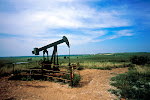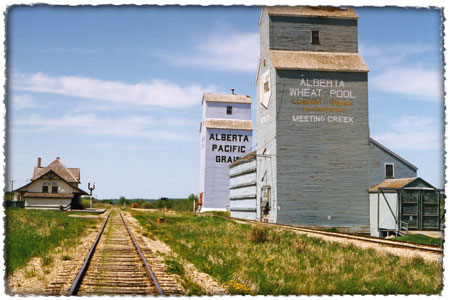As you may have already noticed, a trend has been forming in the Prairies. The arrival of different industries has created cultural and ethnical population changes that contribute to what we know the prairies as today.
The fur trade gave way to English Fur-Traders and merchants who established the first non-native settlements. From this came the establishment of small towns that exist today and natural symbols such as the gopher or beaver. After confederation the task of completing a transcontinental railway brought countless Chinese workers into the picture, though their populations are not as significant into the 20th century. The establishment and growth of agriculture in the west saw the settlement of racially concentrated towns with eastern European heritage, mostly Slavic, Russian and Ukrainian. The agricultural settlements play a crucial role in the strong association of wheat, farmers, cowboys, ranches, crops, grain elevators, tractors, and harvest with the Prairie Provinces.
The big businesses above contributed not only to the prosperity of the Prairies but to the success of Canada as a whole. But after WWII two businesses came storming onto the provincial, national, and international scene. Previous to these two industries the landscapes and the ‘simplicity’ of the people were the main focus of cultural and ethnical society. These industries come from deep, deep, within the Prairies. Now their technology and machines speckle the horizon, digging into the earth and sucking out its riches. Both industries have become dominant players in the Prairie and Canadian economy.
The first is Potash, of which Canada in 2005, held 1/3 of the world’s estimated supply, and pumping out around 25% of the world’s current production. If you are unfamiliar with this mineral it has several properties once broken down from the ore it is mined as. The most significant being potassium, used as a popular agricultural fertilizer. The largest potash mining company, the Potash Corporation of Saskatchewan (PCS), was established in 1975, and its annual output averages at around 6 million tonnes out of Canada’s total 9 million. With export prices reaching $360/t in some countries this is a considerable contribution to the industrial sector of the Canadian economy. Not only does the Prairie reserve allow companies like the PCS to maintain a large control over the market price, but also gives assurance for future employment and allows Canadian farmers direct access to the good.
The second is known as ‘black gold’, and is one of the most crucial commodities in the world. From the late 1890s into the mid 20th century, oil-hungry business men had attempted to tap into the Western Provinces Oil supply. An area known as Turner Valley  was the only place to have much success, but other numerous failed attempts drove prospectors of the ‘black gold’ to other ventures. In 1947 hopes grew strong again as the vast supply of Oil became a reality and today it serves as an enormous asset to Canada. Leduc, Alberta was the first city to begin the boom after the discovery of an oil pocket almost 2.5km underground. Anyone who has been to the Prairie Provinces and looked out upon the land has somewhere across the flat horizon been able to spot one of the countless Oil well Pumps in the land.
was the only place to have much success, but other numerous failed attempts drove prospectors of the ‘black gold’ to other ventures. In 1947 hopes grew strong again as the vast supply of Oil became a reality and today it serves as an enormous asset to Canada. Leduc, Alberta was the first city to begin the boom after the discovery of an oil pocket almost 2.5km underground. Anyone who has been to the Prairie Provinces and looked out upon the land has somewhere across the flat horizon been able to spot one of the countless Oil well Pumps in the land.
As the Industry became a well ‘oiled’ profit making machine, the Federal Government began to gain interest towards how they might be able to share in the growing revenue. Discrepancies arose as to which jurisdiction, provincial or federal, held power over the different sectors of oil production. In 1980, Pierre Trudeau created the National Energy Program, despite long-time Albertan Premier - Peter Lougheed’s - protests and demonstrations against federal intervention of the industry. This created a prevailing anti-liberal culture, giving rise to support for conservative, and in Saskatchewan more specifically NDP, governments.
In recent years the demand for oil and natural gas combined with increasingly sophisticated technology has driven the population of the Prairie Provinces to new heights. With industry sitting around 25-30% of GDP, the Prairies Oil and Mining contributions are definitely symbolic contributors to its culture. The lone oil-pump on the horizon serves as a marker that the ‘simplicity’ of the Prairies people is much underrated.





















No comments:
Post a Comment